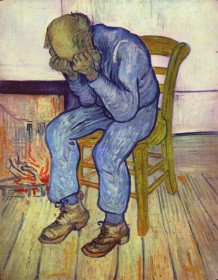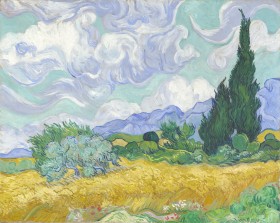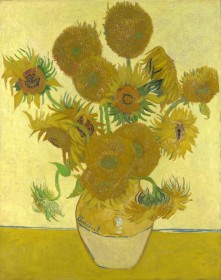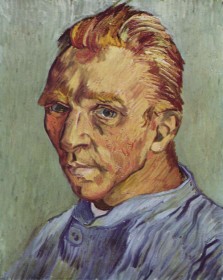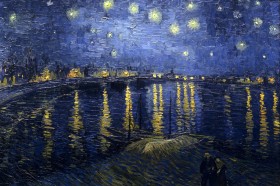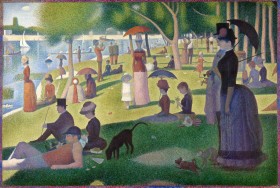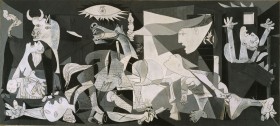Sold for $ 59.3 million in 1987 breaking the record for highest price for a painting at the time, The Irises was initially a study of flowers. It was accomplished by the artist during his stay in the asylum of Saint Remy. He was moved there after getting treated for his mental illness at the hospital of Arles. We can see that the majority of collectors are more interested in those paintings which were produced while van Gogh was mentally ill and was taking treatment. Van Gogh personally called this painting ‘the lightning conductor for my illness’. He believed that during his mental illness painting was a life-support to not break down once again. Thus, he kept painting and produced one of the major works during […]
Paintings from France
Displaying mental distress with insane feelings of the sorrow, the picture describes an old man crying over for unknown reasons. He is stressed out and looks unable to bear any more stress as he is trying to hide from the tensed world by concealing his eyes behind his fists. The support by the elbow represents his weakness and inability to cope more with the undesired situations. The strongly closed fist may represent the anger inside him which has aroused after many years of anxiety and strain as those are the essential factors for anger. The flames in the fireplace at backdrop may represent the fiery agony by which the old man is suffering and has become an infinite struggle. Van Gogh firstly made draft of […]
This painting is a part of the series Cypresses by Van Gogh produced in 1889-1890. The represented one is the most popular as it got famed in 1993 after its sell to Walter H. Annenberg for an equivalent amount of $ 86.3 million. It is considered as the artist one of the masterpieces. Though, if one takes a closer look at the painting, he learns that the depiction is more related to his fantasy than the reality as if he just watched the real scene and then depicted it in his own style of broken brush and post-impressionist vivid colors. This portrayal from his last days has filled with vibrant and close to original colors as he accepted the post-impressionism. Van Gogh’s prominent works has […]
Among the many series of self-portraits, family members, peasants, still-life, cypresses and farmers there, he produced a series of sunflowers proclaiming: “You may know that the peony is Jeannin’s, the hollyhock belongs to Quost, but the sunflower is mine in a way.” The current still-life painting is from the same series being as the forth version of the sunflowers. He painted it while his stay in Arles in 1888 just two years before his death. His fascination towards sunflowers was due to his intention to decorate his house just before his beloved friend Paul Gauguin (the same friend with whom he had the infamous fight) intended to come at his house for some times. There is his signature visible on the left side of the […]
Being in our post of Legend of Vincent van Gogh, the Dutch artist’s this priciest portrait with a huge price tag of $ 71.5 million around 15 years before in 1998 was the third costliest painting of all the time and fourth if we consider the price-inflation. And it is still an impressive rank for a portrait. Alongside with its enormous price-tag there are other facts which make this painting unique from the rest of the self-portraits by Vincent van Gogh which are totals more than 35. This self-portrait executed in 1889, was the last self-portrait by the artist. After that he majorly focused upon the cypresses and wheat fields. Moreover, this is the only painting depicting the artist without beard. As Van Gogh’s many […]
Painting executed in the same city and in the same month, in which the Café Terrace at Night was produced, Starry Night over the Rhone captures a different view and different angle of the beautiful city cited in Paris. Rhone – that which rolls – is an important river running through Arles. Its importance and the beauty at night maybe allured the artist to illustrate it with oil on his canvas. Van Gogh has never tried to depict scene in their natural conditions. He always twisted the scenes and added imaginary colors and portions to the scene to get the exact impact he willed for. Adding artificial color to the image was a new idea in his time and Van Gogh used it very well […]
Van Gogh’s one of the last paintings, Bedroom in Arles depicts his trapezoid shaped room of his Yellow House which he rented for some time during his stay in Arles. He sent his paintings to his brother Theo from time to time just for a general review about them. He made total of three version of the same painting. The first one was just a depiction of his room while the necessity of the second version aroused due to the damage by the flood of the Rhone. His brother suggested him to draw another version. Thus the second version emerged in September 1889. The last version simply called as The Bedroom was executed in smaller size than the original calling it the reduction. Three of […]
Exaggerated portrayal of a real place in Arles, France, Café Terrace at Night is much revered painting. In modern times, the real café on which the artist drew his painting is renamed as the Café Van Gogh and is reconstructed so it could look like the café in the painting. That’s the height of the painter in today’s time. Many visitors visit the café and stands at where Van Gogh placed his easel. As Van Gogh wrote in his letter to his brother Theo, the painting doesn’t depict the exact scenario of the place. The bright orangish-yellow and green texture of the café is the artist’s creation as well as the brightly blue starry night which artist described as a containing poor pale whitish light. […]
A Sunday Afternoon on the Island of La Grande Jatte is a fine example of Georges Seurat’s pointillism. Painting took him two years to complete and during the first year he didn’t included the pointillism in the art work. He made the painting on the island of La Grande Jatte near Paris. Pointillism The painting is depicted in the style of pointillism which was called divisionism at the time of the execution. It is an assemblage of small dots and very small brush-strokes to create a full picture. If looked from a certain distant it creates a perfect picture. Though, at a closer look it seems to be just the collection colorful dots. Even the faces which seems to be having nose, eyes and lips […]
Guernica is a well-appraised painting by the acclaimed artist Pablo Picasso. This mural sized painting was artist’s reaction to the real life bombing on the town of Guernica in Spain during the Spanish Civil War in 1937. The painting and its world-tour during the year helped largely to bring the world’s attention towards the ongoing civil war and its harsh consequences. Today, the painting has become the anti-war symbol. According to some reviewers, the painting was the greatest accomplishment of Picasso’s career for its impacts on the world about the bombing. Picasso and his fellows pushed Cubism ahead with entirely accepting the art-movement and the represented art is a piece of cubist art. The Real Guernica Bombing Bombing of Guernica happened on 26th April, 1937. […]




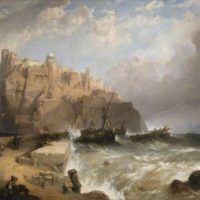

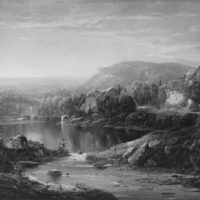
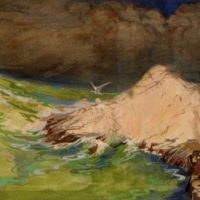
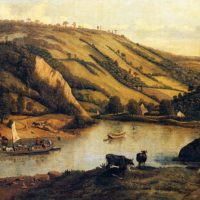




 (3 votes, average: 3.67 out of 5)
(3 votes, average: 3.67 out of 5)